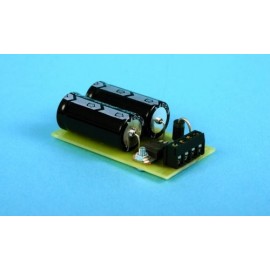Kadee couplings are a popular choice for railway modellers, particularly those modelling in HO and OO gauge....
No products
Product successfully added to your shopping cart
There are 0 items in your cart. There is 1 item in your cart.
Search Tips
Under what circumstances should I consider using a Capacitor Discharge Unit (CDU) with a Point Motor?
A Capacitor Discharge Unit (CDU) is a device that can be used in conjunction with a point motor in model railways to provide more reliable and consistent performance. Here are some circumstances where a modeller may wish to consider using a CDU with a point motor:
Long and complex layouts: If a layout is long and includes many turnouts or switches, a CDU can help ensure that the point motors operate consistently and reliably, even when there is a long distance between the motor and the controller.
Power supply limitations: If there is limited power available to a layout, a CDU can help ensure that there is enough energy available to operate the point motors effectively. By storing energy in a capacitor and releasing it in a burst when the point motor is activated, a CDU can provide a quick and reliable burst of power, even when the power supply is limited.
High-speed trains: If there is a requirement for running high-speed trains on a layout, the point motors can sometimes fail to keep up with the speed of the trains. By using a CDU, it is possible to provide a more powerful and consistent burst of energy to the motor, allowing it to respond more quickly and reliably to changes in the train's speed.
Complex and realistic operations: If a modeller is aiming to create a complex and realistic operating environment for a model railway, a CDU can be a useful tool for achieving this goal. By ensuring that the point motors operate consistently and reliably, it is possible to create a more realistic and engaging operating environment for trains and improve the overall experience of the layout.
Overall, the decision to use a CDU with a point motor will depend on a variety of factors, including the complexity of a layout, the power supply available and the personal preferences of the individual model railway enthusiast. By carefully considering the benefits of using a CDU and evaluating the specific needs and goals, a modeller can determine whether this type of device is right for their layout.
Click here to receive the tips weekly in your mailbox. You can unsubscribe at any time.



.jpg)






